Who is the City For? Architecture, Equity, and the Public Realm in Chicago
Blair Kamin, with photography by Lee Bey | University of Chicago Press | $29
In a 2011 column, “Signs Uglify Our Beautiful Bridges,” anthologized in Blair Kamin’s book Who Is the City For? Architecture, Equity, and the Public Realm in Chicago, the recently retired Chicago Tribune architecture critic takes aim at garish vinyl Bank of America (BoA) ads affixed to the Wabash Avenue Bridge which spans the Chicago River. Built in 1930 and designed by Daniel Burnham’s compatriot Edward Bennett, it has corner anchorage limestone facades and mansard roofs that make it a dignified sentry along the river. Kamin calls them “a grotesque cheapening of the public realm.”
If you read the Chicago NPR affiliate WBEZ, then you know there are deeper reasons for Kamin to object to marring this piece of public infrastructure with the logo of a bank that has steadfastly refused to lend money to people who aren’t white. From 2012 to 2018, white people received 29 times more money for home mortgages than Black people from BoA, making it one of the most racially restrictive banks in Chicago.
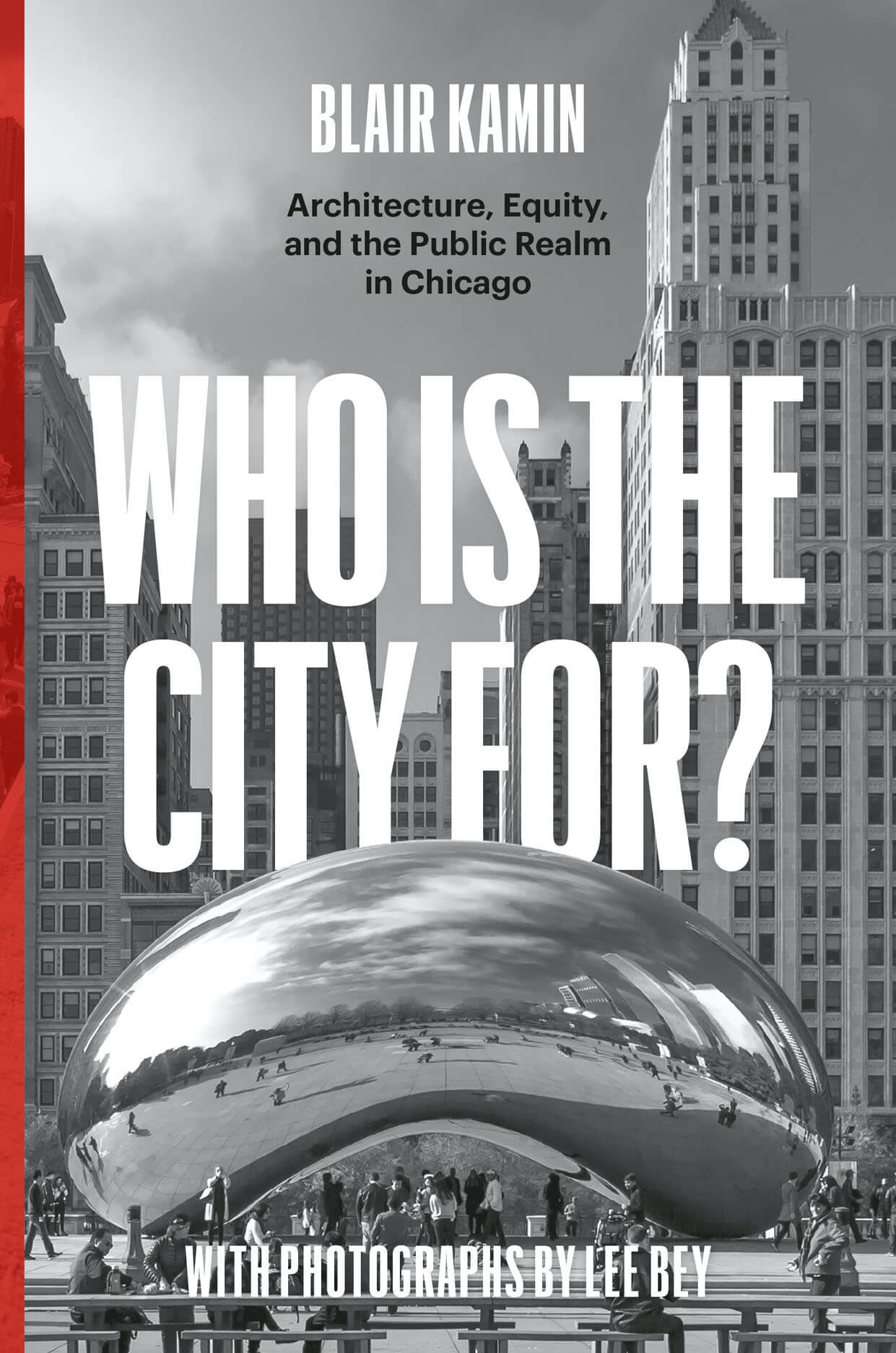
But that’s not why Kamin is offended. He writes: “The deeper problem here is not the corporate sponsorship; it’s how the sponsor is recognized.” The banner of a bank that has strategically disinvested from nonwhite Chicago just doesn’t look good; it’s a “visual cacophony.”
The elision of deep structural issues of political economy reflected in the designed world in favor of aesthetic complaints is Kamin’s go-to move in this compilation of 55 of his columns, sourced from approximately the past decade and accompanied by photos by Lee Bey, former architecture critic at the Chicago Sun-Times, who has recently returned to the post part-time, filing monthly columns. BoA’s racist lending practices weren’t as widely known when the column was written, but the chapter introductions and the postscript addendum that closes each column are new—and this one doesn’t mention BoA’s practices. If I were compiling a book on equity in the built environment, this is the approach I’d take. But it’s Kamin’s book.
There’s nothing inherently wrong about architecture critics voicing opinions on how things look. I often find myself in this unfortunate position. But refocusing the critic’s lens on how the economics of building drives form and aesthetics hardly constitutes abandoning architecture criticism’s fundamental concern with how buildings determine the horizon and quality of our lives. Purely at the level of the designed object, giving BoA a prominent place for advertising should trouble Kamin not only because it was done clumsily but because capital flows create architecture, which reflects the values of the people who can muster the resources to build. More money flowing to nonwhite communities would have generated a richer, more diverse, and representative built environment for Kamin to cover, to say nothing of the material necessities in housing, healthcare, and more that it would have provided for residents.
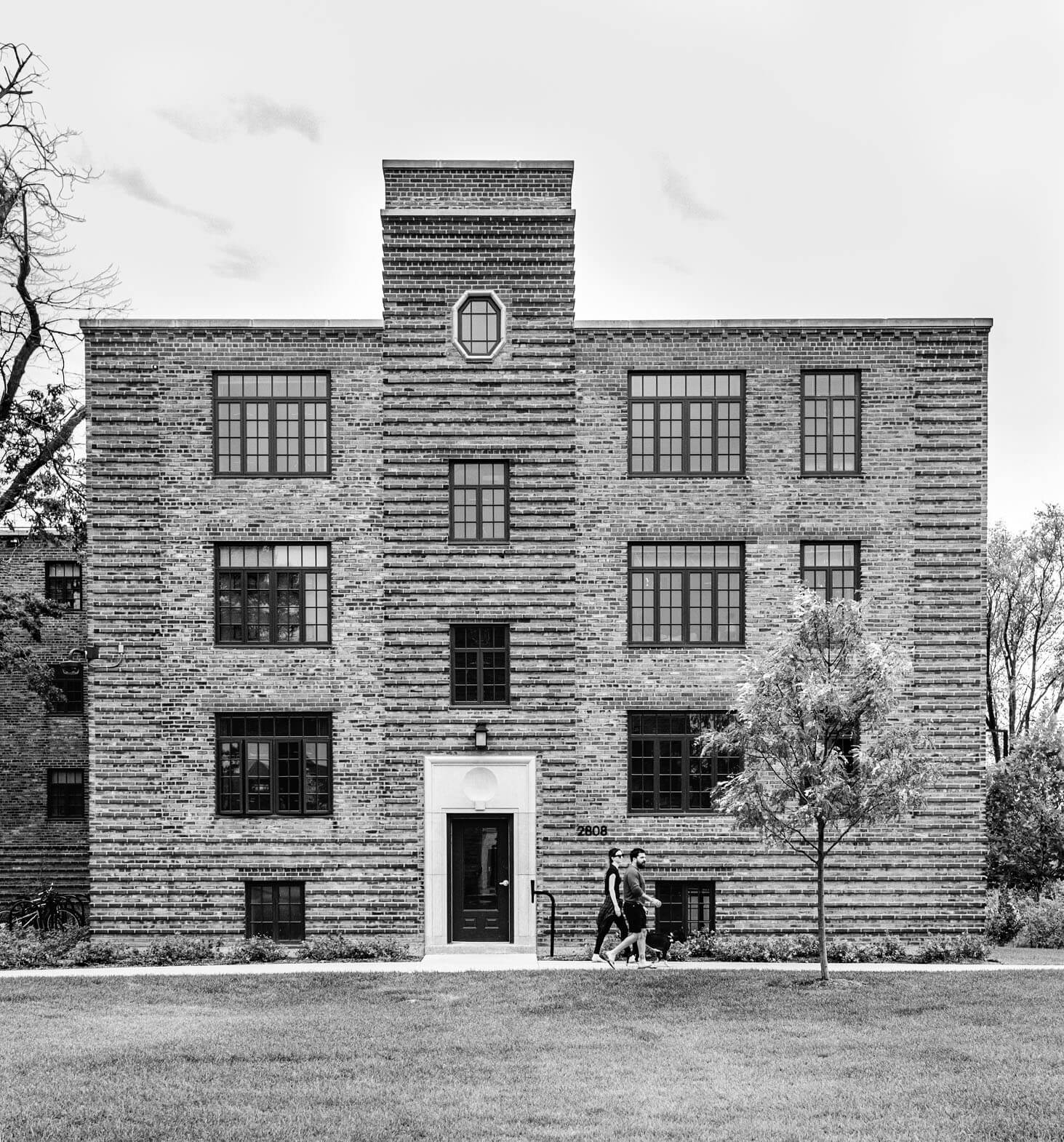
Given Bey’s previous book Southern Exposure: The Overlooked Architecture of Chicago’s South Side (which features both his writing and photography), his inclusion here is reason for excitement, but Kamin’s writing seldom travels to where Bey’s camera has been most evocative. The photos are sharply composed and tasteful throughout, but they mostly take us to places we’ve already been: Wrigley Field, the Thompson Center, the Riverwalk, numerous downtown high-rises, and Frank Lloyd Wright buildings. Southern Exposure was an intimate portrait of a place that felt lived-in and loved, but this sense of immediacy and contextual urban history is absent from Bey’s photos of Jeanne Gang’s Vista Tower and the new Apple Store.
No American critic has had a front-row seat like Kamin for the fantasia and nightmare of urban America’s struggle with accelerated racial capitalism since the Reagan-era neoliberal turn. Just a few miles from the hollowed-out and dispossessed South and West Sides, where the city tore down nearly 20,000 public housing units and conducted the largest mass closure of schools in the nation’s history, Chinese capital initially zipped in to buttress ultra-tall luxury towers downtown above yachts docked along the city’s leafy Riverwalk. But over and over, Kamin walks up to a blindingly obvious symbol of late-capitalist excess and concludes that the biggest problem is that it’s dressed wrong. At Robert A. M. Stern’s neo-art deco detailed One Bennett Park residential tower, condos cost up to $15 million. Kamin wants to know: “Do these buildings add to, or detract from, the skyline?” as if this massive accumulation of capital and material has no more effect on the city than a mural, while it’s actually an investment vehicle for elites to multiply wealth. He judges this one a “mixed bag” because he didn’t like the window detailing and finds its terraced crown “underwhelming.”
There are moments when Kamin acknowledges that the stakes of the built environment go beyond an awkward panel detail. After listing Chicago’s urban dysfunctions, he writes that Anish Kapoor’s skyline-refracting sculpture Cloud Gate “may be the ultimate shiny, distracting object,” in describing how city builders use spectacle to paper over rot. After the George Floyd uprisings, he wrote that the public space white people experience is fundamentally safer than the space Black people inhabit and that “urban design can’t be stuffed into a neat little box, separate from the tumult that is shaking American society.” He reiterates a call for “activist criticism” that can place buildings “in the context of the politics, the economics, and the cultural forces that shape them.” But then he narrows this mission considerably. It’s to “stop hideous buildings and urban spaces from disfiguring the landscape, and to introduce constructive alternatives into the public debate.”
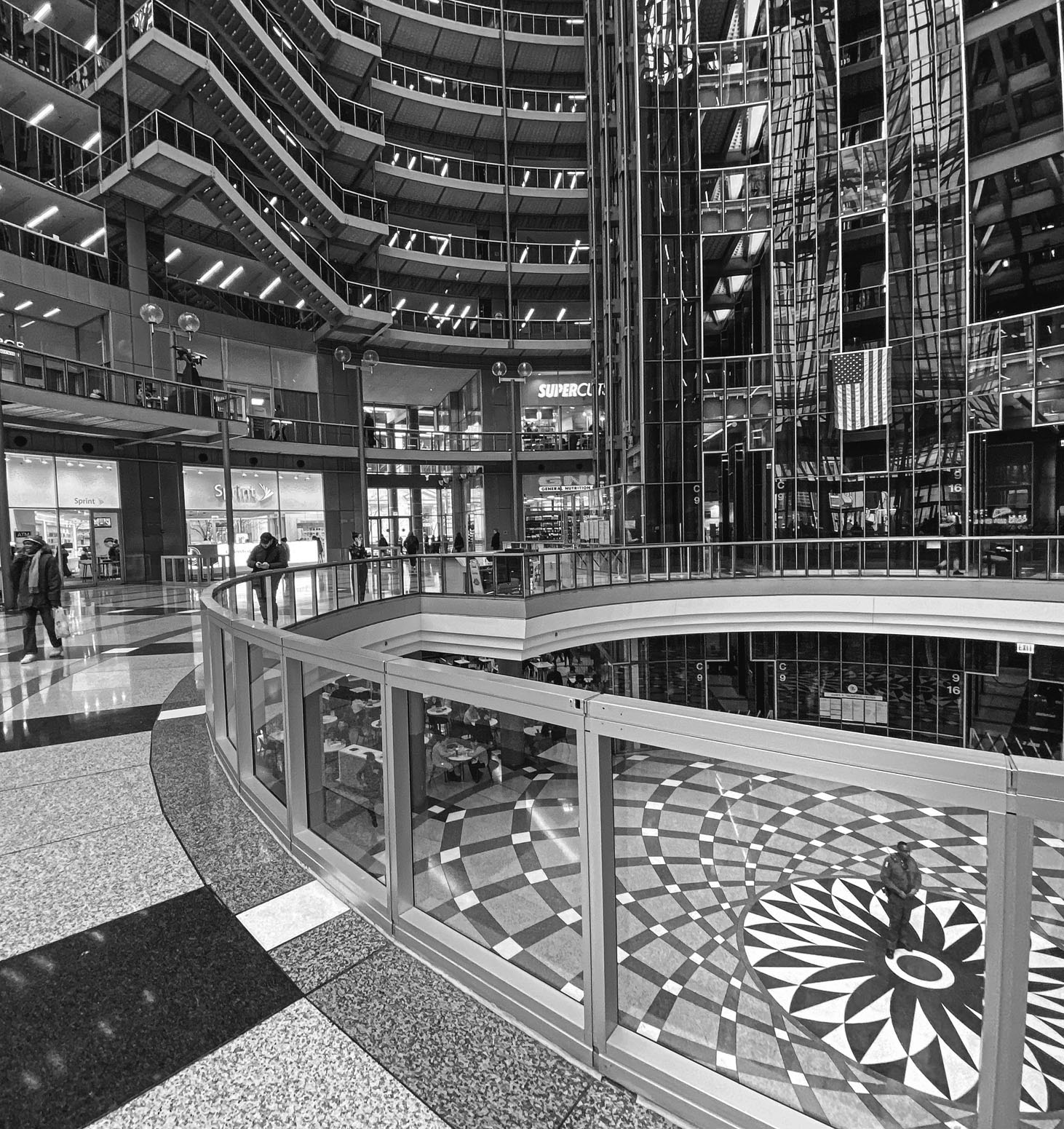
Kamin rightfully calls out former Chicago mayor Rahm Emanuel for governing for the benefit of the elite. Emanuel promoting the 55-acre North Side Lincoln Yards megadevelopment “crystallized the view that [he] was more attuned to the needs of the developers who financed his political war chest than to the plight of the city’s poor and working class,” Kamin lands. But the book is almost over by now, and this
is the first hint we get that the current system of development is structurally biased against investing in the types of infrastructure those experiencing the most precarity need to live dignified, healthy lives. As such, the words capitalist and capitalism each appear once in this book.
This minute awakening seems to set up the book’s tagline: “What kind of city are we building?” he writes. Does it work for “the poor, working class, and middle class as well as the rich?” Just a few sentences later, instead of answering this definitively, he sidesteps with “the core issue” at Lincoln Yards, which is not its relative paucity of affordable housing (1,200 of 6,000 units) in an affluent, well-resourced neighborhood, but instead the overweening density of the project, launching into a list of NIMBY concerns. Then he gives a pass to the city’s decision to deliver public tax increment financing funds generated by rising property values back to the Lincoln Yards developers instead of to the city.
Kamin saw Emanuel for what he was but couldn’t repeat the feat for the mayor’s successor Lori Lightfoot, calling her election in 2019 a “left turn” toward “progressivism.” Lightfoot’s major architectural initiatives have been a casino to shore up the city’s budget and a police academy complete with a raid village for battering ram practice for a force that has paid out more than $250 million in misconduct settlements in four years. She has weaponized bridges against protesters and forced teachers to strike over a demand that every school have a nurse. And like Emanuel, she supported giving public money to Lincoln Yards.
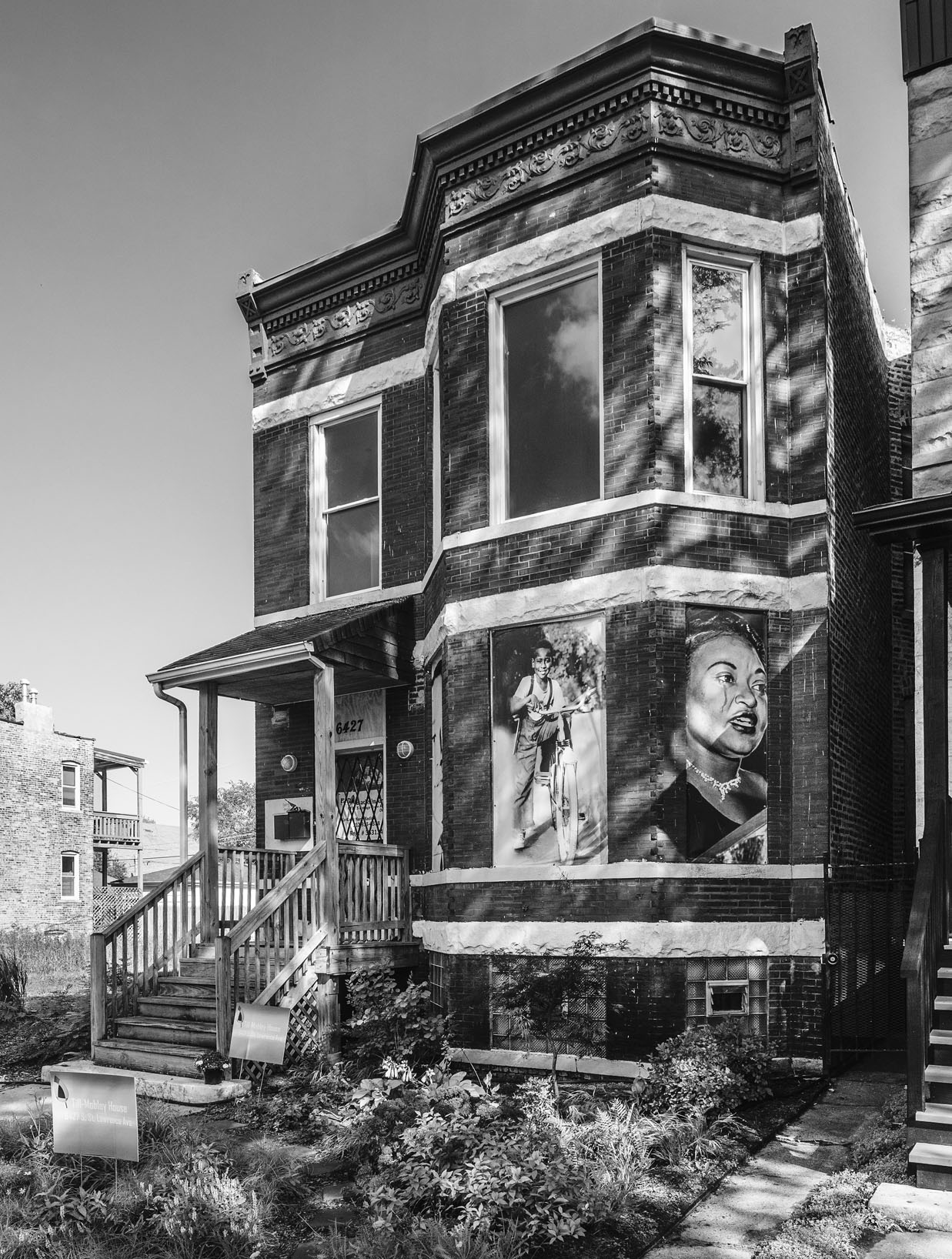
Kamin rightfully praises one of Lightfoot’s signature initiatives, Invest South/ West, which will funnel $750 million in public funds into regenerating the commercial and residential cores of poor neighborhoods on the South and West Sides.
But the considerable, though insufficient, public money spent here is dwarfed by the approximately $2 billion the city will spend on Lincoln Yards and the similar 78 megadevelopment in the city’s South Loop. By misinterpreting Lightfoot’s tenure as a progressive reaction instead of a new face hawking mostly the same regime of austerity for the poor and plenty for the rich, Kamin demonstrates how the material stakes for examining built environment is made are lowered and architectural criticism is able to settle back into its routine of aesthetic yeas and nays.
Toward the end of the book, Kamin calls for “an urban Marshall Plan that spreads the benefits of boom times to each and every one of the city’s fifty wards.” Forecasting the potential contours of such a plan is a job worthy of a Chicago architecture critic—one would track the coalitions that must gain power to do this work, explore historical precedents for buildings aimed at delivering equity from revisionist political alignments, and, yes, trace how this specific combination of labor, materials, and political orientation generates form and space. But, despite the book’s stated emphasis on equity, that’s not what this book does, and after Kamin retired last year, Chicago has no full-time architecture critic.
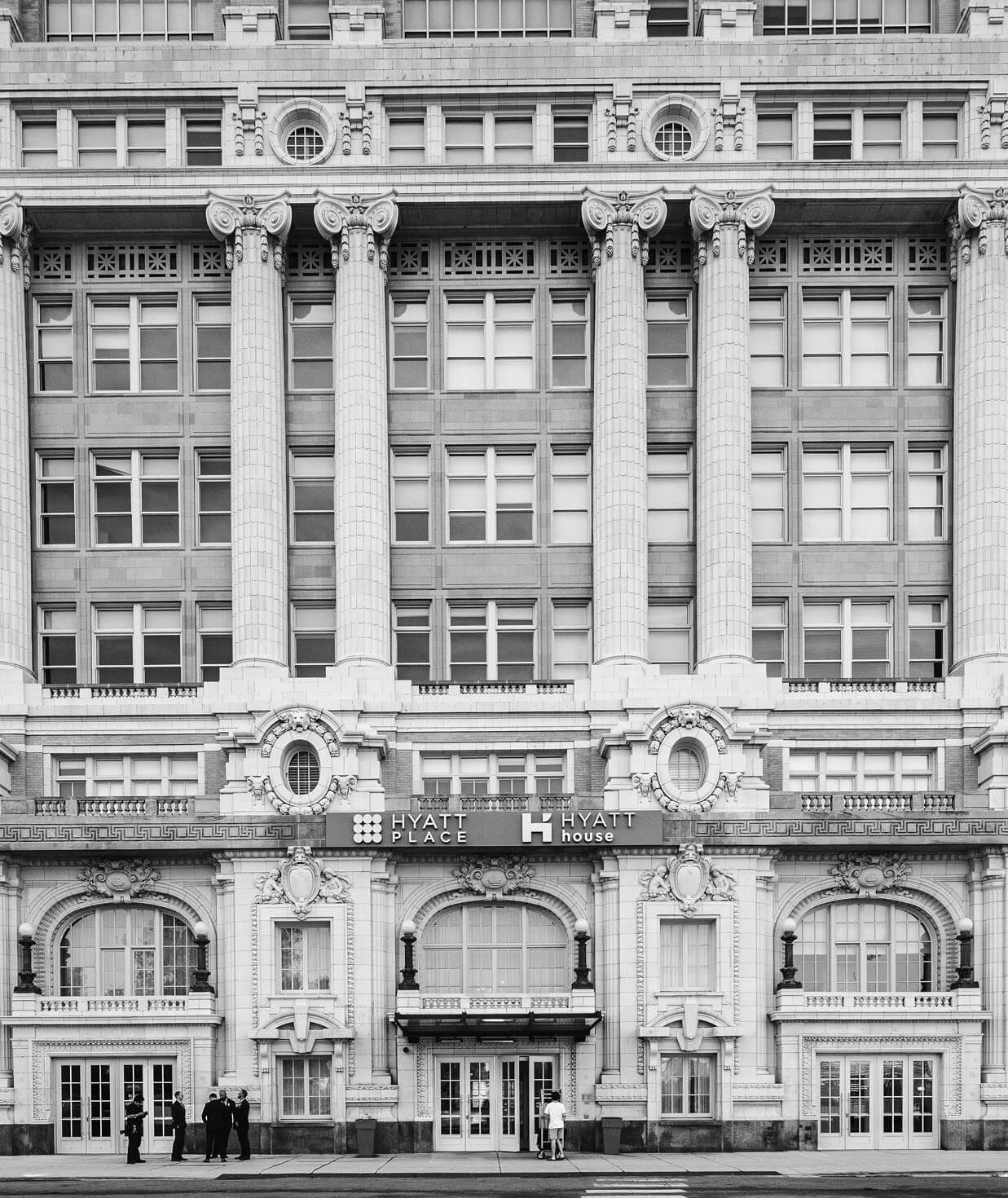
As the country’s stable of newspaper architecture critics gets put out to pasture, the sharpest critiques lately have come from digital-native content produced by terminally online and often-anonymous internet posters with none of the institutional heft of Kamin’s cohort and all of the sarcasm-laced, horny rage of overworked grad students. Instead of the rarefied notion of “the critic,” Instagram meme accounts like Dank Lloyd Wright (@dank.lloyd.wright) offer a democratic and diffuse buffet of decolonial vengeance, labor militancy, and a penchant for upending formal and aesthetic histories. Nearly every post starts with the notion that there is something rotten with architecture and the people who practice and teach it. Most argue that bad outcomes (formally or functionally) are always tied to bad processes (politics and the economy) that produce them. “Meme-fluencers” are now being absorbed into mainstream architectural discourse, and their task will be to break out of their context-free, academic internet sewer—if they want to.
I don’t know if Kamin has read Dank Lloyd Wright’s work or if he considers the account to be an “emerging theorist.” But because I am convinced he cares about architectural criticism and the equity of cities, I hope he gives them a follow.
Zach Mortice is a Chicago-based design journalist and critic focused on architecture and landscape architecture’s relationship to public policy.











